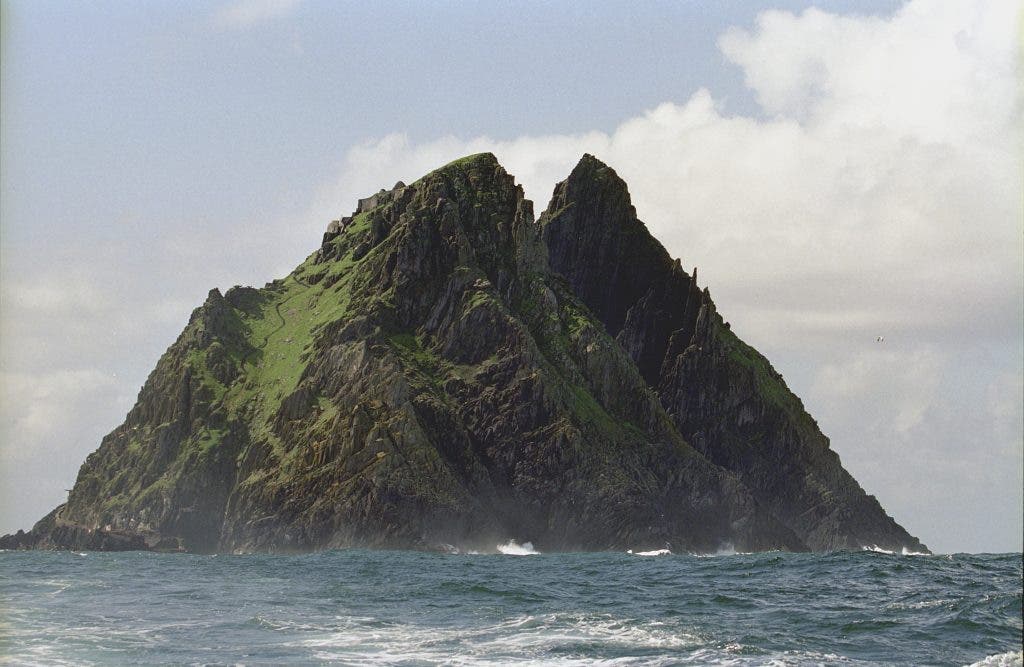
“An incredible, impossible, mad place. I tell you the thing does not belong to any world that you and I have lived and worked in; it is part of our dream world.”– George Bernard Shaw
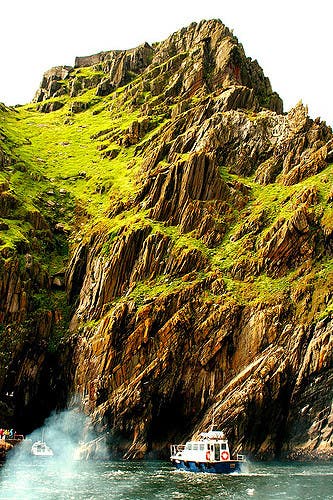
Skellig Michael (from Sceilig Mhichíl in the Irish language, meaning Michael’s rock), also known as Great Skellig, is a steep rocky island in the Atlantic Ocean about 15 kilometres from the coast of County Kerry, Ireland. After probably being founded in the 7th century, for 600 years the island was a centre of monastic life for Irish Christian monks. The Gaelic monastery, which is situated almost at the summit of the 230-metre-high rock became a UNESCO World Heritage Site in 1996.
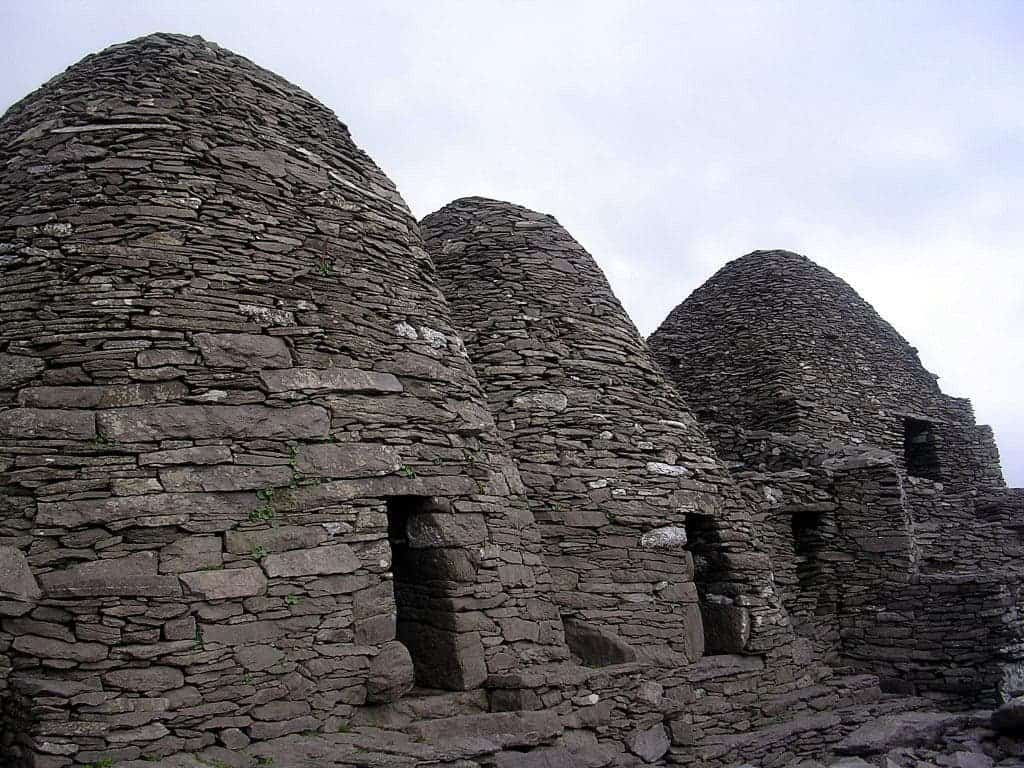
Faulting of Devonian sandstone and gravels has created a U-shaped depression, known today as ‘Christ’s Valley’ or ‘Christ’s Saddle’, 130 m above sea level in the centre of the island, and this is flanked by two peaks, that to the north-east rising to 185 m and that to the west-south-west 218 m. The rock is deeply eroded and weathered, owing to its exposed position, but is almost frost-free. Landing is possible at three points, depending on the state of the sea. These communicate by flights of steps with the principal monastic remains, which are situated on a sloping shelf on the ridge running north-south on the north-eastern side of the island; the hermitage is on the steeper South Peak.
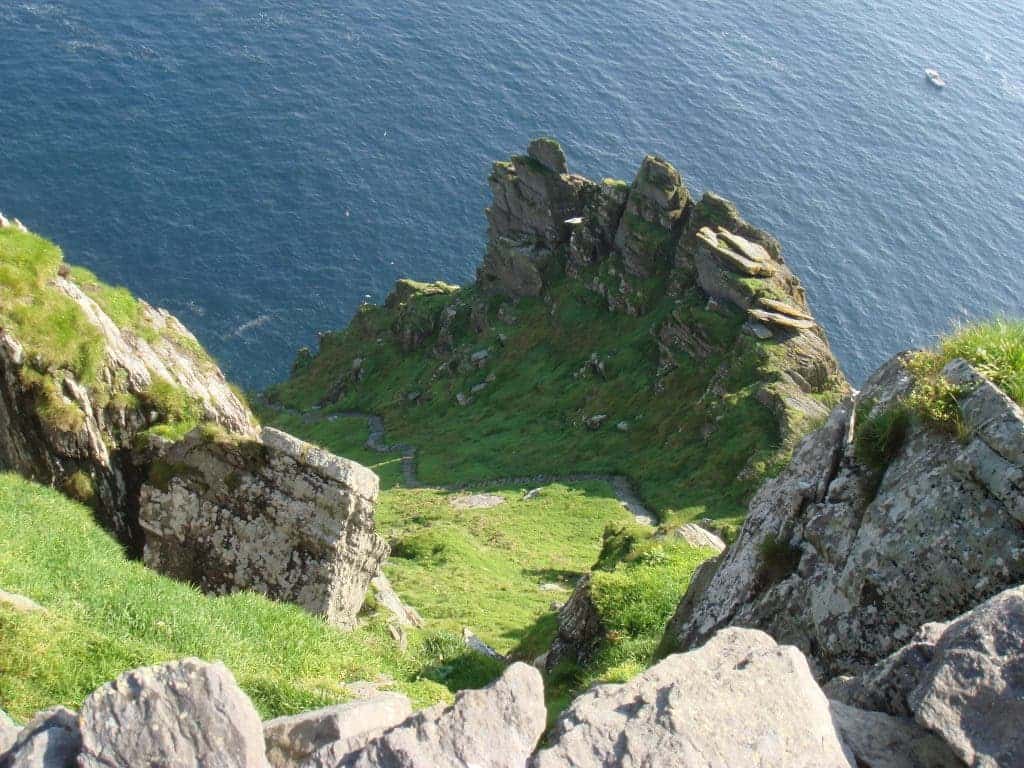
Faulting of Devonian sandstone and gravels has created a U-shaped depression, known today as ‘Christ’s Valley’ or ‘Christ’s Saddle’, 130 m above sea level in the centre of the island, and this is flanked by two peaks, that to the north-east rising to 185 m and that to the west-south-west 218 m. The rock is deeply eroded and weathered, owing to its exposed position, but is almost frost-free. Landing is possible at three points, depending on the state of the sea.
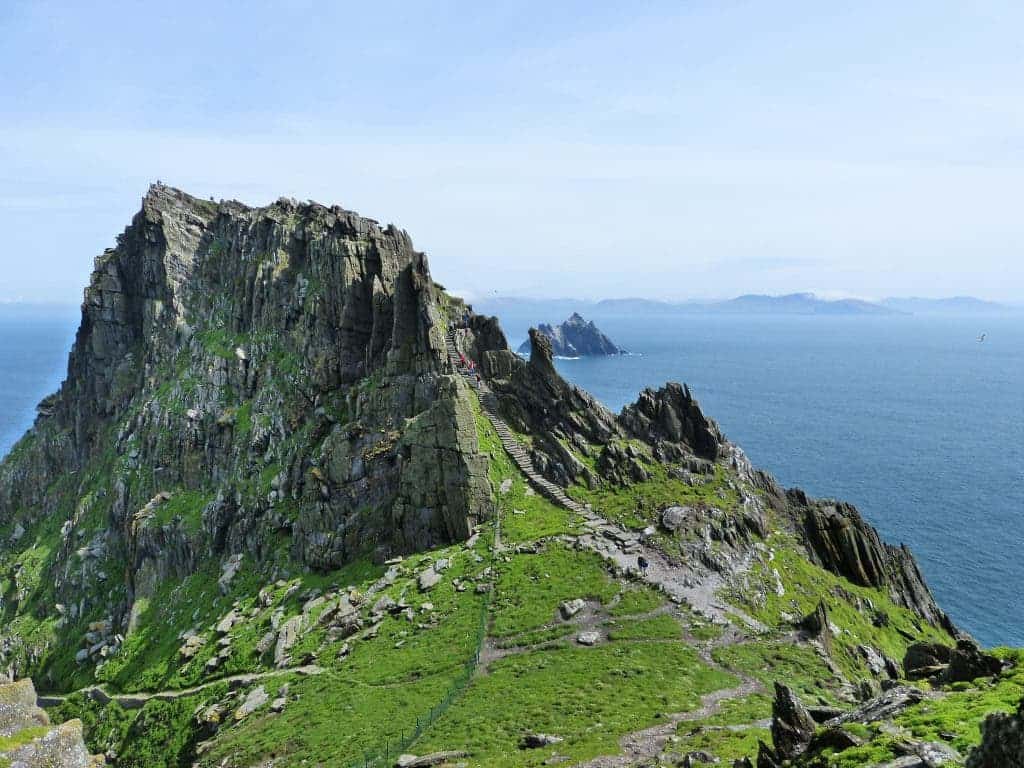
The very spartan conditions inside the monastery illustrate the ascetic lifestyle practiced by early Irish Christians. The monks lived in stone ‘beehive’ huts (clochans), perched above nearly vertical cliff walls. These communicate by flights of steps with the principal monastic remains, which are situated on a sloping shelf on the ridge running north-south on the north-eastern side of the island; the hermitage is on the steeper South Peak.

The site is exceptionally well preserved, since it positioning discouraged most unwanted visitors and tourists. Even so, the monastery on Skellig Michael survived a number of Viking raids in the 9th century, notably in 823. The community at Skellig Michael was never large – around 12 monks and an abbot. Some time in the 12th century the monks abandoned the Skellig and moved to the monastery of Augustinian Canons Regular at Ballinskelligs on the mainland.
Even if it is one of the best known monasteries in Europe, it as also the least visited due to the harsh conditions and lack of transportation.


